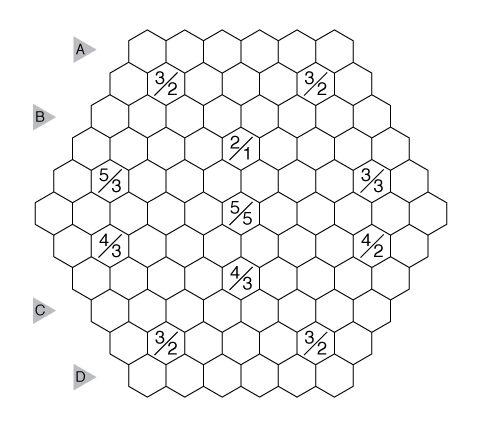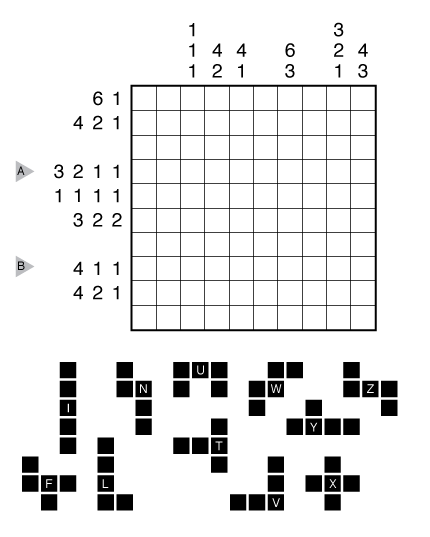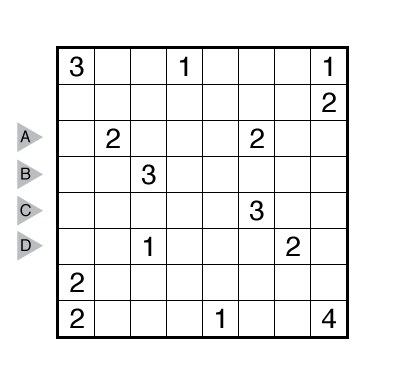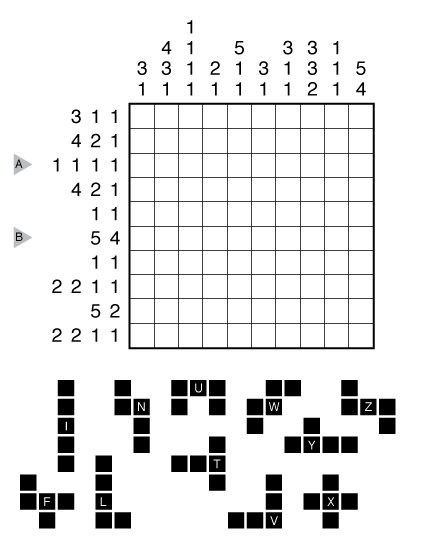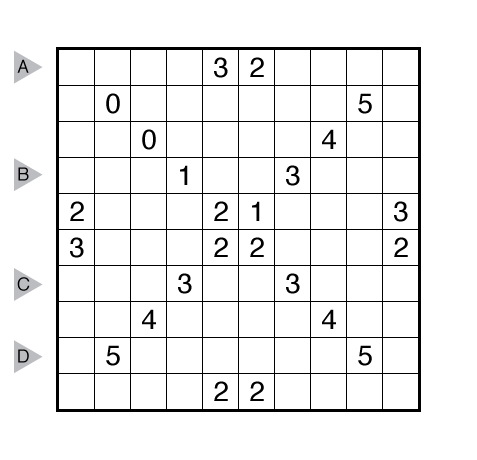Place by Product by Ravi Kumar Macherla
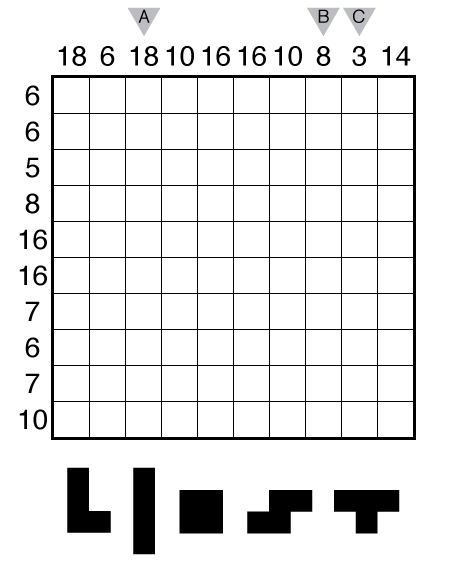
or solve online (using our beta test of Penpa-Edit tools).
Theme: Logical
Author/Opus: This is the 1st puzzle from guest contributor Ravi Kumar Macherla who also contributed several Masyu to the book “The Art of Puzzles”. You can find more of Ravi’s puzzles on his relatively new blog site.
Rules: Place each of the indicated shapes into the grid (rotations allowed, but not reflections) so that no two shapes touch even at a corner. Numbers outside the grid indicate the product of the lengths of all white cell groups in that row/column. Or see here:
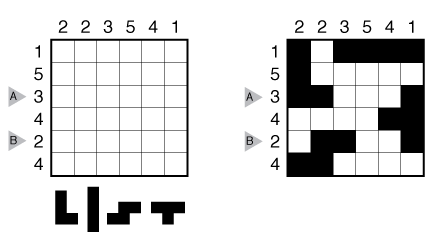
Answer String: Enter the number of cells in each group (both black and white) in order in the marked rows/columns. In the example, this answer is “231,1221”
Time Standards (highlight to view): Grandmaster = 4:15, Master = 7:00, Expert = 14:00
Solution: PDF

